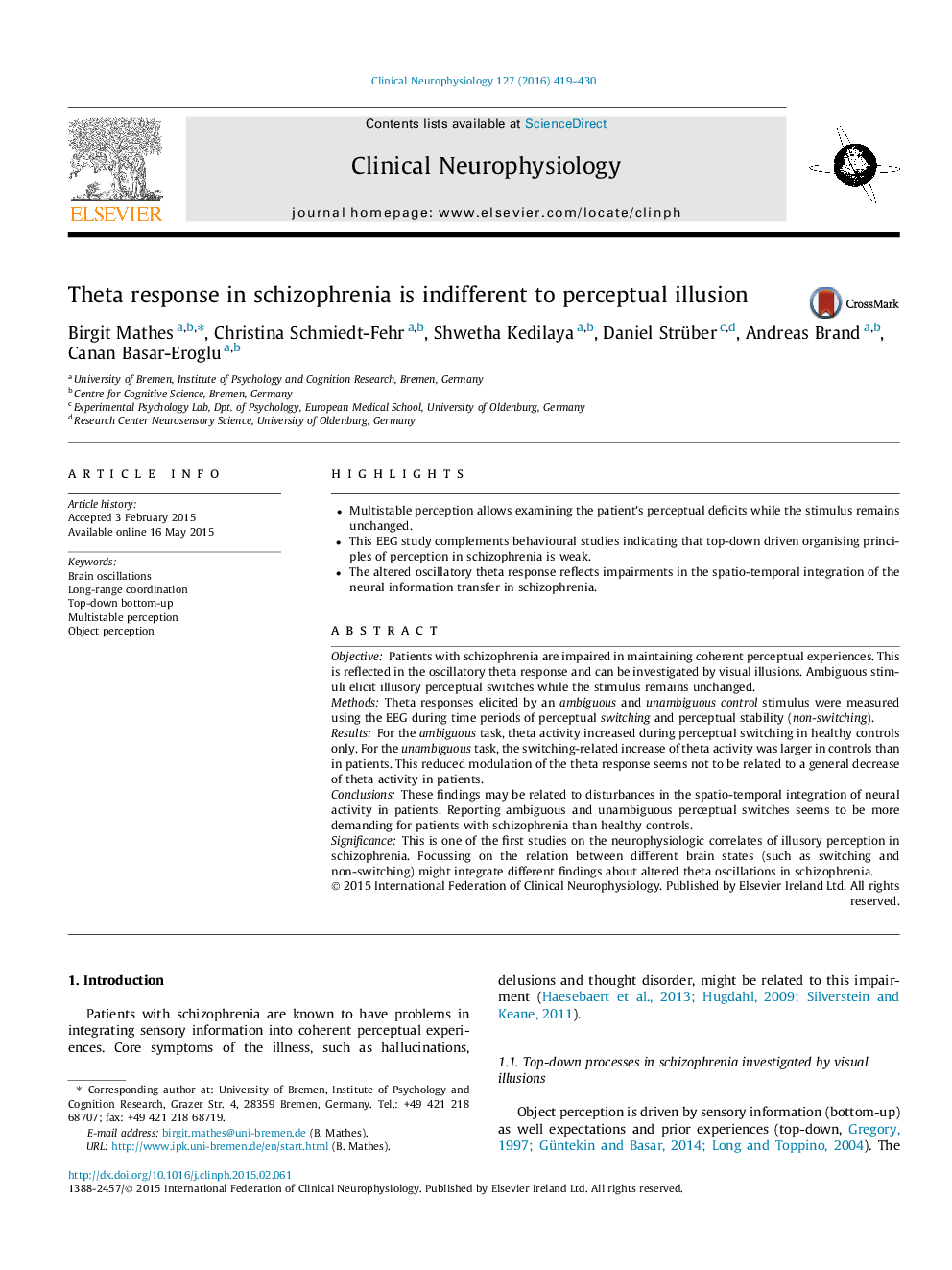| Article ID | Journal | Published Year | Pages | File Type |
|---|---|---|---|---|
| 6007897 | Clinical Neurophysiology | 2016 | 12 Pages |
â¢Multistable perception allows examining the patient's perceptual deficits while the stimulus remains unchanged.â¢This EEG study complements behavioural studies indicating that top-down driven organising principles of perception in schizophrenia is weak.â¢The altered oscillatory theta response reflects impairments in the spatio-temporal integration of the neural information transfer in schizophrenia.
ObjectivePatients with schizophrenia are impaired in maintaining coherent perceptual experiences. This is reflected in the oscillatory theta response and can be investigated by visual illusions. Ambiguous stimuli elicit illusory perceptual switches while the stimulus remains unchanged.MethodsTheta responses elicited by an ambiguous and unambiguous control stimulus were measured using the EEG during time periods of perceptual switching and perceptual stability (non-switching).ResultsFor the ambiguous task, theta activity increased during perceptual switching in healthy controls only. For the unambiguous task, the switching-related increase of theta activity was larger in controls than in patients. This reduced modulation of the theta response seems not to be related to a general decrease of theta activity in patients.ConclusionsThese findings may be related to disturbances in the spatio-temporal integration of neural activity in patients. Reporting ambiguous and unambiguous perceptual switches seems to be more demanding for patients with schizophrenia than healthy controls.SignificanceThis is one of the first studies on the neurophysiologic correlates of illusory perception in schizophrenia. Focussing on the relation between different brain states (such as switching and non-switching) might integrate different findings about altered theta oscillations in schizophrenia.
